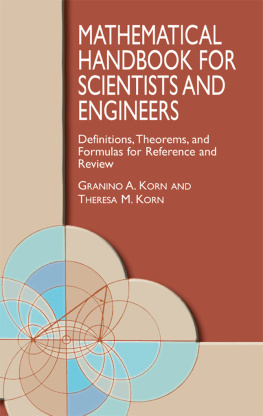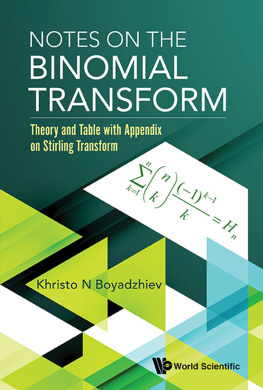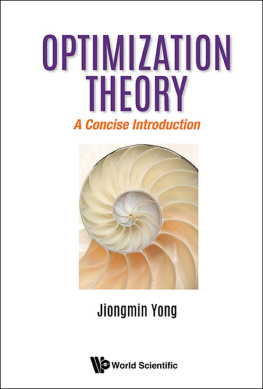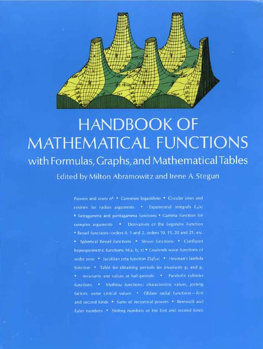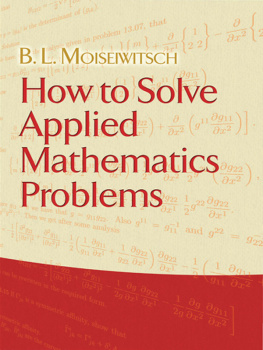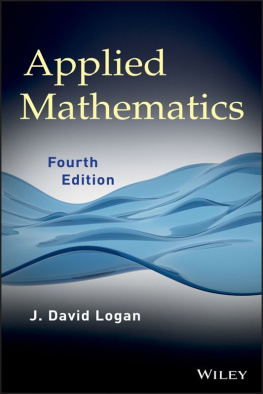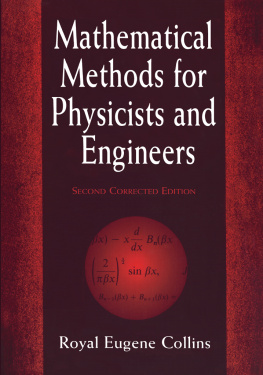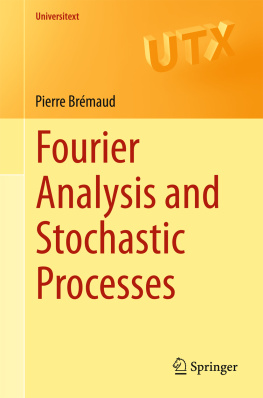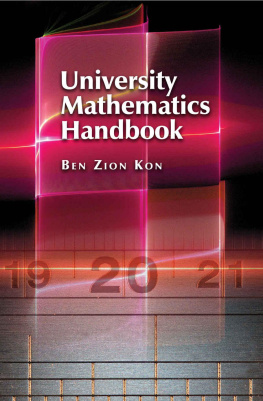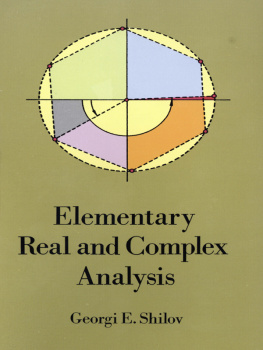MATHEMATICAL HANDBOOK
FOR SCIENTISTS
AND ENGINEERS
Definitions, Theorems, and Formulas
for Reference and Review
Granino A. Korn
and
Theresa M. Korn
DOVER PUBLICATIONS, INC.
Mineola, New York
Copyright
Copyright 1961, 1968 by Granino A. Korn and Theresa M. Korn
All rights reserved.
Bibliographical Note
This Dover edition, first published in 2000, is an unabridged republication of the work originally published in 1968 by McGraw-Hill, Inc., New York. A number of typographical errors have been corrected.
Library of Congress Cataloging-in-Publication Data
Korn, Granino Arthur, 1922
Mathematical handbook for scientists and engineers : definitions, theorems, and formulas for reference and review / Granino A. Korn and Theresa M. Korn.
p. cm.
Originally published: 2nd, enl. and rev. ed. New York : McGraw-Hill, cl968.
Includes bibliographical references and index.
ISBN 0-486-41147-8 (pbk.)
1.MathematicsHandbooks, manuals, etc. I. Korn, Theresa M. II. Title.
QA40 .K598 2000
510'.2'ldc21
00-030318
Manufactured in the United States by Courier Corporation
41147806
www.doverpublications.com
This book is dedicated to the memory of Arthur Korn (1870-1945), who excelled as a mathematician as well as a theoretical physicist and as a communications engineer.
PREFACE TO THE SECOND EDITION
This new edition of the Mathematical Handbook has been substantially enlarged, and much of our original material has been carefully, and we hope usefully, revised and expanded. Completely new sections deal with z transforms, the matrix notation for systems of differential equations (state equations), representation of rotations, mathematical programming, optimal-control theory, random processes, and decision theory. The chapter on numerical computation was almost entirely rewritten, and the revised appendixes include a discussion of Polya's counting theorem, several new tables of formulas and numerical data, and a new, much larger integral table. Numerous illustrations have been added throughout the remaining text.
The handbook is again designed, first, as a comprehensive reference collection of mathematical definitions, theorems, and formulas for scientists, engineers, and students. Subjects of both undergraduate and graduate level are included. The omission of all proofs and the concise tabular presentation of related formulas have made it possible to incorporate a relatively large amount of reference material in one volume.
The handbook is, however, not intended for reference purposes alone; it attempts to present a connected survey of mathematical methods useful beyond specialized applications. Each chapter is arranged so as to permit review of an entire mathematical subject. Such a presentation is made more manageable and readable through the omission of proofs; numerous references provide access to textbook material for more detailed studies. Special care has been taken to point out, by means of suitable introductions, notes, and cross references, the interrelations of various topics and their importance in scientific and engineering applications.
The writers have attempted to meet the individual reader's requirements by arranging the subject matter at three levels:
1. The most important formulas and definitions have been collected in tables and boxed groups permitting rapid reference and review.
2. The main text presents, in large print, a concise, connected review of each subject.
3. More detailed discussions and advanced topics are presented in small print. This arrangement makes it possible to include such material without cluttering the exposition of the main review.
We believe that this arrangement has proved useful in the first edition.
The arrangement of the introductory chapters was left unchanged, although additions and changes were made throughout their text. Chapters 1 to 5 review traditional college material on algebra, analytic geometry, elementary and advanced calculus, and vector analysis; Chapter 4 also introduces Lebesgue and Stieltjes integrals, and Fourier analysis. Chapters 6, 7, and 8 deal with curvilinear coordinate systems, functions of a complex variable, Laplace transforms, and other functional transforms; new material on finite Fourier transforms and on z transforms was added.
Chapters 9 and 10 deal with ordinary and partial differential equations and include Fourier- and Laplace-transform methods, the method of characteristics, and potential theory; eigenvalue problems as such are treated in Chapters 14 and 15. Chapter 11 is essentially new; in addition to ordinary maxima and minima and the classical calculus of variations, this chapter now contains material on linear and nonlinear programming and on optimal-control theory, outlining both the maximum-principle and dynamic-programming approaches.
Chapter 12, considerably expanded in this edition, introduces the elements of modern abstract language and outlines the construction of mathematical models such as groups, fields, vector spaces, Boolean algebras, and metric spaces. The treatment of function spaces continues through Chapter 14 to permit a modest functional-analysis approach to boundary-value problems and eigenvalue problems in Chapter 15, with enough essential definitions to enable the reader to use modern advanced texts and periodical literature.
Chapter 13 treats matrices; we have added several new sections reviewing matrix techniques for systems of ordinary differential equations (state equations of dynamical systems), including an outline of Lyapunov stability theory. Chapter 14 deals with the important topics of linear vector spaces, linear transformations (linear operators), introduces eigenvalue problems, and describes the use of matrices for the representation of mathematical models. The material on representation of rotations was greatly enlarged because of its importance for space-vehicle design as well as for atomic and molecular physics. Chapter 15 reviews a variety of topics related to boundary-value problems and eigenvalue problems, including Sturm-Lioiwille problems, boundary-value problems in two and three dimensions, and linear integral equations, considering functions as vectors in a normed vector space.
Chapters 16 and 17 respectively outline tensor analysis and differential geometry, including the description of plane and space curves, surfaces, and curved spaces.
In view of the ever-growing importance of statistical methods, the completely revised Chapter 18 presents a rather detailed treatment of probability theory and includes material on random processes, correlation functions, and spectra. Chapter 19 outlines the principal methods of mathematical statistics and includes extensive tables of formulas involving special sampling distributions. A subchapter on Bayes tests and estimation was added.
The new Chapter 20 introduces finite-difference methods and difference equations and reviews a number of basic methods of numerical computation. Chapter 21 is essentially a collection of formulas outlining the properties of higher transcendental functions; various formulas and many illustrations have been added.
The appendixes present mensuration formulas, plane and spherical trigonometry, combinatorial analysis, Fourier- and Laplace-transform tables,

